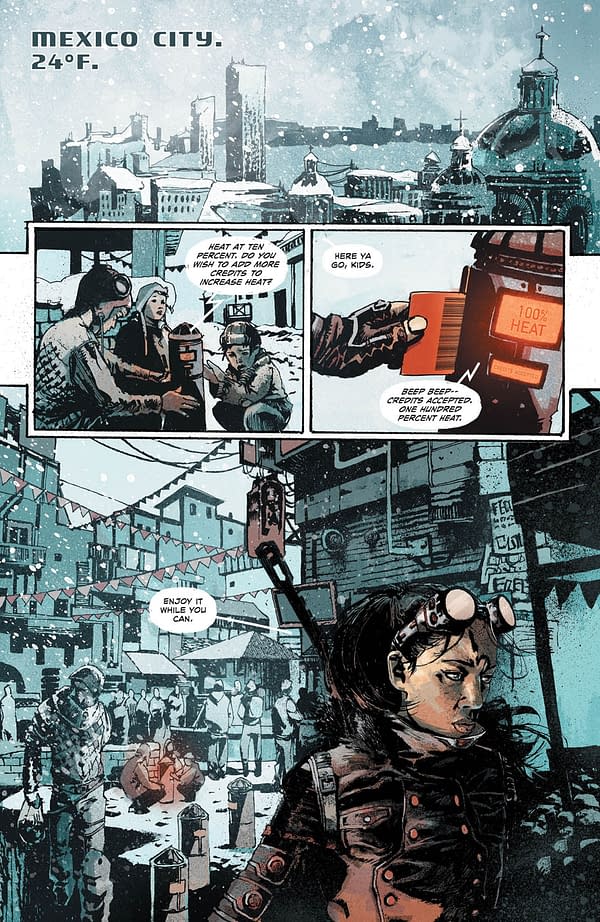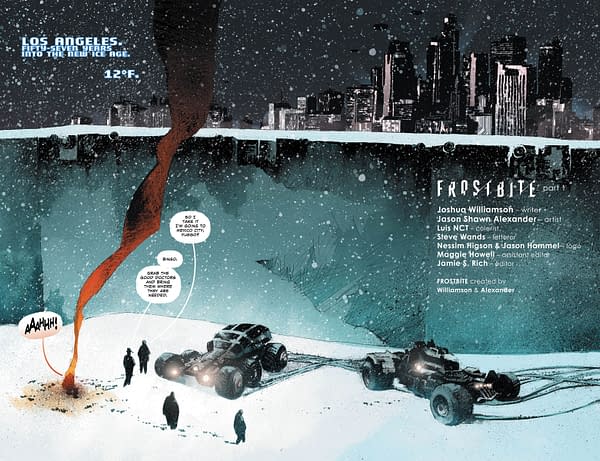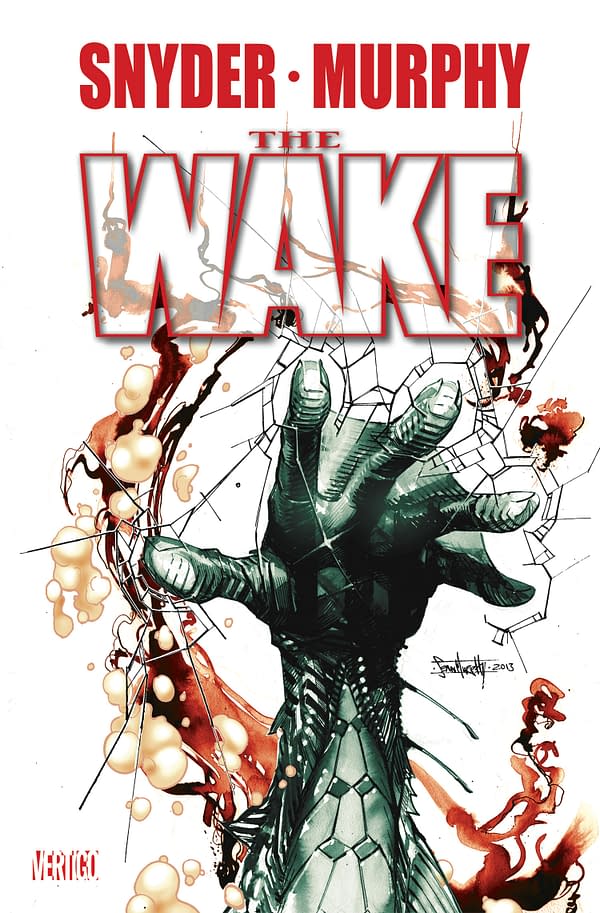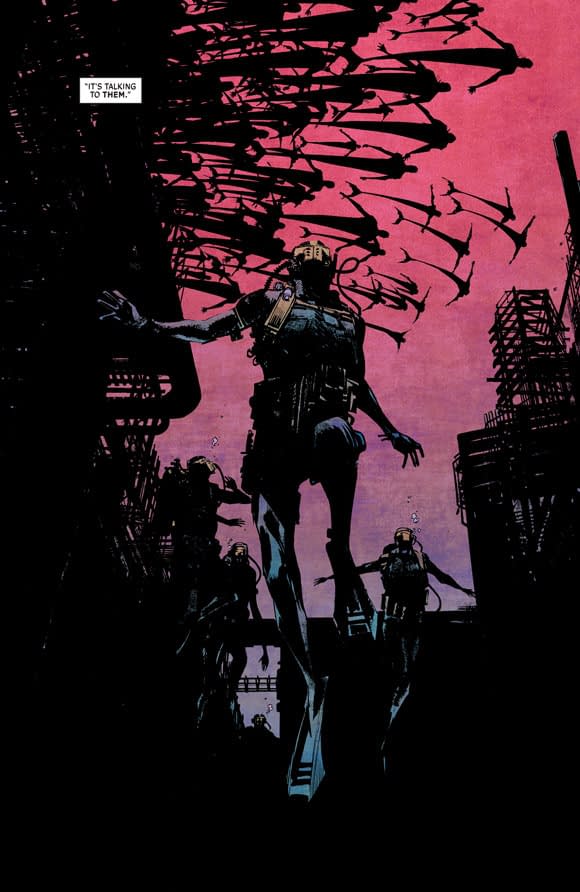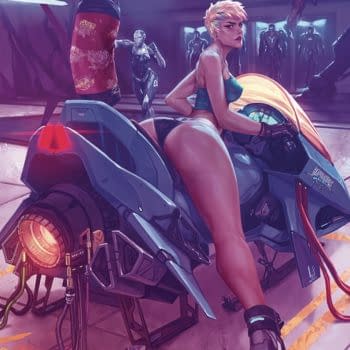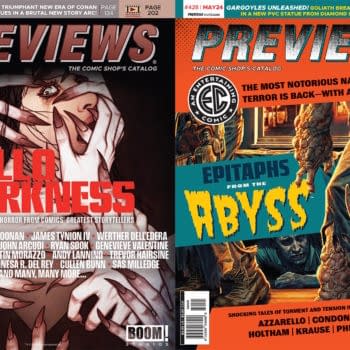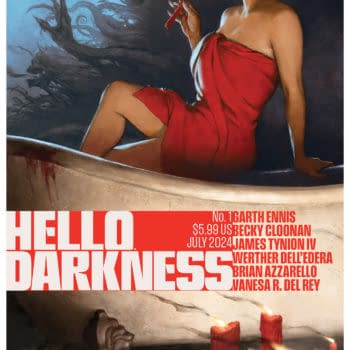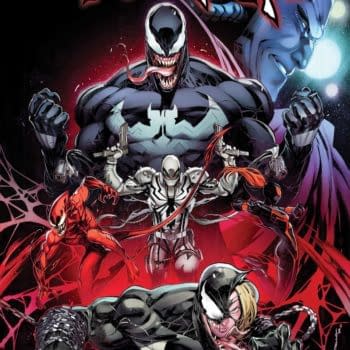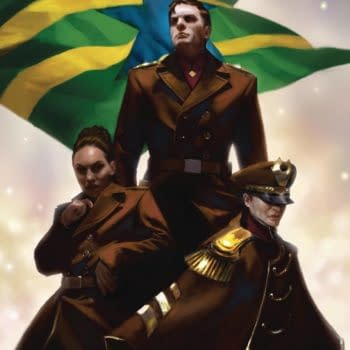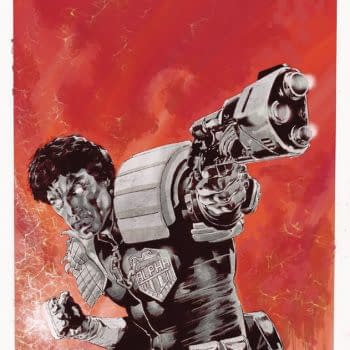Posted in: Comics | Tagged: Comics, entertainment
Vertigo's Frostbite, The Wake, And A New Tradition
Vertigo's wave of releases last fall included a number of interesting horror titles—in particular Red Thorn and Clean Room have kept my attention, though Unfollow and Survivor's Club also made strong showings and Twilight Children has been a standout classic.
The new wave of Vertigo releases, alongside the Young Animal imprint, prompted plenty of advance discussion. Now that they're gradually being released, we can gage more how the tone might have shifted and what we can expect coming up. I've read Doom Patrol (Young Animal), Shade: The Changing Girl (Young Animal), and Frostbite (Vertigo) in advance copies, and so far I'm 3 for 3. All of them have held my attention and my curiosity. I look forward to checking out Mother Panic (Young Animal) and Cave Carson has a Cybernetic Eye (Young Animal) too.
Among these titles, Frostbite breaks different ground, but not totally unfamiliar ground. I was surprised and enthusiastic to realize, while reading the first issue of Frostbite, that it reminded me of many of the qualities that I had admired in Scott Snyder and Sean Gordon Murphy's Eisner Award-winning Vertigo title The Wake. At the time that The Wake was released, it received critical attention, and a fair amount of acclaim, but it also stood as something very different—both from Snyder and from Vertigo—than readers had seen before. There was a kind of pause in reader response, and I'd venture to say even a moment or two of grappling with language to accurately describe that innovative, post-apocalyptic, aspirational comic.
Frostbite, written by Joshua Williamson (Birthright, Nailbiter, recently signed an exclusive with DC), drawn by Jason Shawn Alexander (Empty Zone, Batman: Arkham City, Hellboy and much more), with colors by Luis NCT and letters by Steve Wands, has several qualities that remind me of The Wake, in the sense that it holds onto the ground gained by The Wake in comics, and has the potential to develop that territory further. Firstly, and most obviously, it's post-apocalyptic. In The Wake, the world has been overrun by water, radically changing the scape of human life. Adventures, conflicts, dangers, all lurk in an embattled environment to which human beings are not attuned and have to artificially bump up their potential for survival through gadgets, suits, and machines. In Frostbite, the world has been consumed by crippling cold, even the LA setting of the opening of the first issue, and human beings struggle against a hostile environment. Sure—it's an environmental disaster comic, that's what they do. That's right, but how often do we see an environmental disaster comic from Vertigo, and how often do we see one with the qualities I'm going to describe below?
In Frostbite we have a female lead and a woman of color as part of a team, which I'm delighted to see, and one of the reasons The Wake impacted me so much was that we had a female lead in a scientific/exploratory setting. But also, Jason Shawn Alexander's artwork, which captured my imagination in Empty Zone, is heavily driven by human posture, pose, and facial expression. This ramps up emotional engagement for the reader. Even huddled in blankets or zipped into climate suits, his characters feel actually human rather than just representing humanity for the reader. On The Wake, Sean Murphy's attention to linework and close focus on facial expression are what helped build the horror aspects of that comic and the triumphant, determined tone of humanity's struggle against overwhelming odds. Alexander digs deep in the same ways and dignifies pain and suffering and struggle in a way that brings higher and lower notes to the story we're engaged in.
Because of Alexander's use of a realistic style, his settings also really hit their mark. What is difficult to do in any visual medium is to make the characters and the viewer feel small and isolated in the presence of much bigger threats. The cities Alexander presents even in the first issue are stark, populated but not overrun, and focusing on large objects in close-up is reserved for emphasis. He's a fan of the medium shot and the long shot, and those are the qualities that will immerse us in the world of the comic. One need only think of Sean Murphy's underwater or sailing scapes in The Wake to experience again how tiny humanity can seem against environmental or predatory threats in a similar way.
Luis NTC's color on this comic is already noteworthy—it creates an excellent, chalky balance with the incised inking of Alexander's style. Capturing a snowy world at night is no easy task, and spattering it with atmospheric snow constantly in new and interesting ways must be painstaking. The biggest coloring surprise in the first issue is when the palette blazes into a fire fight—and out again—and your eyes, acclimated to the colder tones of the comic so far—feel kind of blinded by it in just the way Luis must have intended. The Wake was also careful about color choices to create an experience of its world, and surprised readers with pastels set against stark inking on a regular basis. There are pastels lurking in Frostbite, too, but carefully doled out and kept in reserve for dramatic effect.
Story-wise, Frostbite contains some of the embattled hope that The Wake presented. Because it's not just enough that humans are facing polar cold in the cities and life-ending cold on ice sheets outside of them in a new ice age, but there's also a strange, devastating biological illness called "Frostbite" that's little understood but changes humans on a cellular level and eventually consumes them. And has the potential to reach plague proportions. There's the potential for a life-saving mission that could make a big difference to humanity in fighting this plague—though their wider struggle against the elements is not going to go away. There are no band-aids or quick fixes here.
All in all, Frostbite encourages you to experience this world of the comic in a different way than we usually encounter as readers—as a kind of immersive experience that's not just about the structure of story or interesting characters, but about casting humanity against a backdrop larger and more shadowy than we can usually conceive of. The more post-apocalyptic comics, films, TV shows we experience, the more we might take for granted what the characters face, and the higher the stakes have to be to really engage our emotions. But sometimes managing to get through to readers can be simple—by paying attention to the big picture and presenting it as realistically large and overwhelming in plot and artwork.
Frostbite has the potential to show us the big picture and for us to follow its characters into bigger realizations. This is the kind of place given to environment in the plot and artwork of The Wake, and it's very reassuring to see another comic continuing to blaze that trail and build on that comic's pioneering qualities.
Frostbite #1 is available in shops now and was released on September 28th, 2016.



